Drawing From Life
One of the reasons that I like living in a small town like Tuberville is that you just feel like you have a lot more time to go slow and observe things. It is amazing how many folks just don’t stop to look at their natural surroundings.
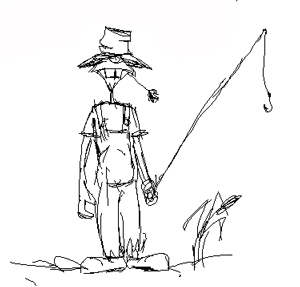
I’ve written here in the blog before about how much humor is inspired by just watching people and critters. Which naturally leads into today’s topic which is the importance of drawing from life. I suppose that “life drawing” is almost as misunderstood as thumbnails and gestures.
Thumbnails and gestures are a shorthand way for an artist to take notes or capture essential information quickly so that they can have them for future reference. It is amazing how novice cartoonists think that they have to jump right to finished art work. Cartooning is a process and therefore like most processes it has more than one step. In fact, one thing that I’ve noticed in many of the students I’ve encountered is that they don’t make the connection between thinking and drawing.
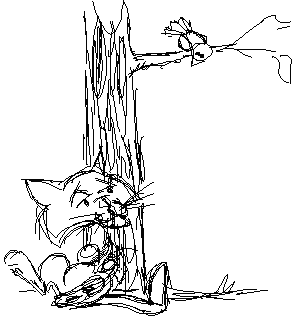
I suppose it is another age old misconception that art is an emotional form of expression which leads people to assume that drawing is a sensory kind of thing totally involving “feelings”. Sure there are all sorts of emotions expressed through drawings or paintings but because emotions are expressed, it doesn’t mean that the artist disconnected their brain from the process.
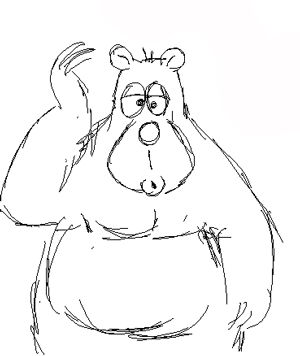
Drawing is communication of information, emotions are information too and therefore to communicate information clearly and concisely the artist needs to be thinking about what they are doing when they are drawing. Every line and every form is there for a purpose. It is all information. So if you are making marks on the paper without thinking about why, then you aren’t drawing you're doodling. Now artists tend to like to think with their pencils so gesture drawings and thumbnails are the first step in that thinking process. They are like making notes before writing a story or jotting down ideas for future gag development.
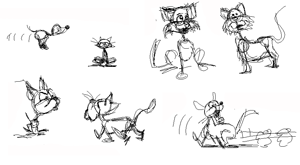
Back to the topic of life drawing, if drawings are meant to communicate information, then the artist must have a foundation in how people perceive and understand things. Sure there are short cuts and conventions that have evolved in cartoons over the years for communicating ideas but fundamentally visual communication is based on perceptions grounded in life and nature. People learn from their experiences in the real world from the time they are born so if you present things to them that don’t closely mirror that real world they will subconsciously reject those things that are unnatural.
Now many people who want to be cartoonists just start out copying cartoons themselves. That’s not a terrible thing, but it is similar to learning to speak by only copying the way that Daffy Duck talks. Could you imagine how limiting it would be to try to communicate if your only reference to speech was based on what you copied from mimicking Daffy?
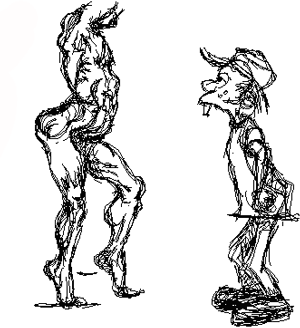
One objection, which I often hear from students when the subject of life drawing is first presented, is they don’t feel comfortable drawing pictures of “necked” people. I can appreciate that some people are uncomfortable with nude models. But life drawing isn’t just learning to draw the unclothed human form. It is about drawing everything in nature, cats, dog, birds, clouds, trees, rocks....everything. Just start looking around you and you will find millions of natural things to use as your life models.
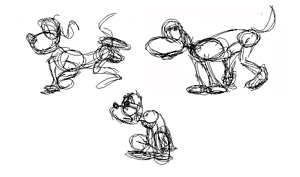
More importantly life drawing is a first and important step in developing your observational skills. You can’t make animated cartoons if you don’t learn to observe real life and translate and exaggerate it in your drawings or puppets.
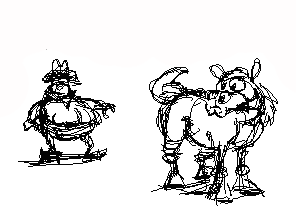
"IF HE DROPS HIS TROUSERS, I'M OUT OF HERE !!!!"

I’ve written here in the blog before about how much humor is inspired by just watching people and critters. Which naturally leads into today’s topic which is the importance of drawing from life. I suppose that “life drawing” is almost as misunderstood as thumbnails and gestures.
Thumbnails and gestures are a shorthand way for an artist to take notes or capture essential information quickly so that they can have them for future reference. It is amazing how novice cartoonists think that they have to jump right to finished art work. Cartooning is a process and therefore like most processes it has more than one step. In fact, one thing that I’ve noticed in many of the students I’ve encountered is that they don’t make the connection between thinking and drawing.

I suppose it is another age old misconception that art is an emotional form of expression which leads people to assume that drawing is a sensory kind of thing totally involving “feelings”. Sure there are all sorts of emotions expressed through drawings or paintings but because emotions are expressed, it doesn’t mean that the artist disconnected their brain from the process.

Drawing is communication of information, emotions are information too and therefore to communicate information clearly and concisely the artist needs to be thinking about what they are doing when they are drawing. Every line and every form is there for a purpose. It is all information. So if you are making marks on the paper without thinking about why, then you aren’t drawing you're doodling. Now artists tend to like to think with their pencils so gesture drawings and thumbnails are the first step in that thinking process. They are like making notes before writing a story or jotting down ideas for future gag development.

Back to the topic of life drawing, if drawings are meant to communicate information, then the artist must have a foundation in how people perceive and understand things. Sure there are short cuts and conventions that have evolved in cartoons over the years for communicating ideas but fundamentally visual communication is based on perceptions grounded in life and nature. People learn from their experiences in the real world from the time they are born so if you present things to them that don’t closely mirror that real world they will subconsciously reject those things that are unnatural.
Now many people who want to be cartoonists just start out copying cartoons themselves. That’s not a terrible thing, but it is similar to learning to speak by only copying the way that Daffy Duck talks. Could you imagine how limiting it would be to try to communicate if your only reference to speech was based on what you copied from mimicking Daffy?

One objection, which I often hear from students when the subject of life drawing is first presented, is they don’t feel comfortable drawing pictures of “necked” people. I can appreciate that some people are uncomfortable with nude models. But life drawing isn’t just learning to draw the unclothed human form. It is about drawing everything in nature, cats, dog, birds, clouds, trees, rocks....everything. Just start looking around you and you will find millions of natural things to use as your life models.

More importantly life drawing is a first and important step in developing your observational skills. You can’t make animated cartoons if you don’t learn to observe real life and translate and exaggerate it in your drawings or puppets.

"IF HE DROPS HIS TROUSERS, I'M OUT OF HERE !!!!"

3 Comments:
Great post, JK.
I guess life drawing is like taking a vitamin for your animation skills. I've noticed that most, if not all, good animation school curriculums have you taking some sort of life drawing class every semester (keeping in mind that each student would have already have been admitted based on a worthy portfolio). Do you think you lose the observation skills you get from life drawing if you don't do it constantly? One thing (among many) that I struggle with is how much time to spend on prepatory activities, like life drawing, versus actually creating animation.
Jimmy,
I think that life drawing like any other activity gains from continued practice, so as an artist grows professionally the value of life drawing also grows as each new exercise benefits from the cumulative effects of the artist's collective experiences.
As far as observational skills those too only improve with time and practice.
Animation and drawing are obviously closely linked and it is particularly difficult to animate much without good draftmanship, but at the same time you can practice and learn a great deal of your animation skills while you are developing your drawing skills. Take the balloon exercise you were doing, it requires very fundamental drawing skills but there is so much that you can learn as you practice that exercise, getting a sense for flow and timing. And the Flour Sack exercises don't involve great drawing either but you can move significantly down the road to becoming a better animator just by doing those types of animations, learning to add personality and to show the effects of forces and weight.
My advice is to stay balanced and work on both areas in such a way that you feel you are making steady improvements and also maintaining a strong level of fun and joy in your efforts. Too much of anything is usually never as good as a proper balance.
It always seems like there is never time to do life drawing but when you make the time it always leads to a flood of ideas.
Post a Comment
<< Home